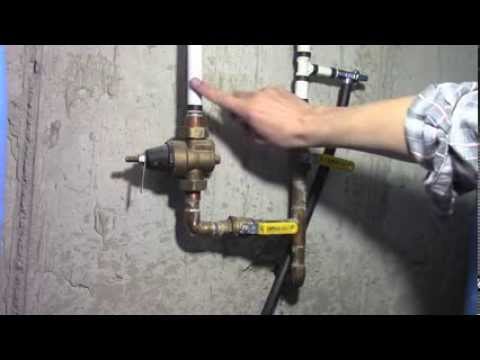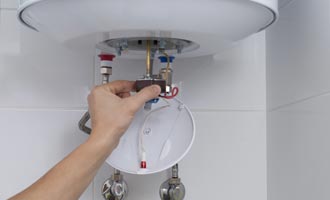Approaches to Tackle Low Water Pressure in Your Home
Approaches to Tackle Low Water Pressure in Your Home
Blog Article
They are making a number of great pointers relating to 10 Reasons for Low Water Pressure in Your House in general in the content which follows.

Low tide pressure in your house can be an aggravating problem, influencing everything from bathing to washing recipes. If you're experiencing weak water circulation, there are numerous feasible causes and services to explore. In this overview, we'll talk about typical factors for low tide stress and sensible actions to attend to the problem effectively.
Intro to Low Water Stress
Low tide stress happens when the flow of water from your taps, showers, and various other fixtures is weaker than normal. This can make day-to-day jobs much more challenging and less efficient. Understanding the root causes of low tide pressure is crucial to locating the appropriate remedy.
Usual Causes of Low Water Pressure
Pipeline Obstructions
With time, pipelines can end up being obstructed with mineral deposits, debris, or particles, limiting the circulation of water. This is a common concern in older homes with galvanized steel pipelines.
Rust
Corrosion within pipelines can result in leaks and minimized water pressure. Corrosion buildup can tighten water circulation, especially in maturing plumbing systems.
Faulty Stress Regulators
Stress regulatory authorities are responsible for keeping constant water pressure in your house. If they malfunction, it can lead to low tide pressure or irregular flow throughout the house.
Community Water Supply Issues
Often, the issue lies outside your home. Municipal water concerns, such as main line leakages or maintenance job, can briefly lower water pressure in your location.
Just How to Detect Low Tide Pressure
Checking Faucets and Fixtures
Beginning by checking the water pressure at different faucets and components throughout your home. If the issue is isolated to details locations, it may suggest localized issues.
Evaluating Pipelines
Inspect visible pipelines for indications of leakages, rust, or obstructions. Focus on any kind of unusual noises, such as knocking or rattling pipes, which might suggest concerns within the plumbing system.
Consulting with a Plumber
If you're incapable to pinpoint the reason for low tide stress, take into consideration working with an expert plumber to perform a thorough assessment. They can determine underlying concerns and suggest suitable solutions.
Do It Yourself Solutions to Deal With Low Tide Pressure
Cleaning Up Aerators and Showerheads
Mineral deposits can accumulate in aerators and showerheads, lowering water flow. Remove and cleanse these parts regularly to improve water pressure.
Flushing Hot Water Heater
Sediment accumulation in the hot water heater can restrict flow and minimize effectiveness. Flushing the container regularly helps remove sediment and keep optimal performance.
Inspecting Pressure Regulatory Authority
Make certain that the pressure regulator is functioning appropriately. Changing or replacing the regulator can assist recover correct water pressure throughout your home.
Clearing Clogs in Pipes
For small clogs, attempt utilizing a plumbing serpent or chemical drain cleaner to clear obstructions in pipes. Beware when utilizing chemicals and adhere to safety and security standards.
When to Call an Expert Plumber
If do it yourself efforts fail to resolve the problem or if you presume considerable plumbing problems, it's finest to look for assistance from a certified plumber. They have the proficiency and tools to deal with intricate problems safely and efficiently.
Safety Nets to Keep Water Pressure
Normal Upkeep
Arrange routine upkeep for your plumbing system to stop problems such as deterioration, leaks, and blockages. Dealing with small troubles early can aid prevent more substantial repair work later.
Installing a Stress Booster
Take into consideration setting up a stress booster pump to boost water pressure in locations with regularly low flow. This can be particularly useful for multi-story homes or buildings with high-demand components.
Tracking Water Use
Bear in mind water usage practices and avoid ill-using the plumbing system. Straightforward changes, such as incredible showers and washing tons, can help keep adequate water pressure.
Verdict
Managing low tide stress can be irritating, however recognizing the underlying reasons and executing proper solutions can restore optimum flow throughout your home. Whether it's cleaning up aerators, examining pipes, or speaking with a plumber, taking aggressive steps can guarantee a steady supply of water for your day-to-day requirements.
FOUR WAYS TO FIX LOW WATER PRESSURE NOW
Turning on a shower or faucet only to find the water comes out in a sad, slow drizzle is never a good feeling. How exactly are you supposed to wash a pan or take a quick shower when it takes 10 minutes just to rinse off a little soap? The good news is that when your water pressure is bad, there's always a cause: typically one that can be easily fixed. Here are some of the most common causes of low pressure and what you can do to fix the issue:
DEBRIS AND MINERAL DEPOSIT BUILDUPS
If you notice low water pressure from just one or two of the fixtures in your house, the problem likely has to do with debris buildup. Water is full of minerals and other debris, all of which can accumulate in your pipes and on your fixtures. This can cause a blockage that affects how much water flows through. To fix this, try filling a small plastic bag with white vinegar, and use a rubber band to hang it around your showerhead or faucet. Let the head of the fixture soak for a few hours, and the vinegar should loosen the deposits.
WATER LEAKS
Leaks are another common cause of low water pressure. If water is flowing out of your plumbing through a hole or crack before it can reach your fixture, the pressure coming out of the faucet or showerhead will be lower. A plumbing professional is your best bet for finding and repairing a leak in your water supply pipes.
Leaks are another common cause of low water pressure. If water is flowing out of your plumbing through a hole or crack before it can reach your fixture, the pressure coming out of the faucet or showerhead will be lower. A plumbing professional is your best bet for finding and repairing a leak in your water supply pipes.
FOUR WAYS TO FIX LOW WATER PRESSURE NOW
Turning on a shower or faucet only to find the water comes out in a sad, slow drizzle is never a good feeling. How exactly are you supposed to wash a pan or take a quick shower when it takes 10 minutes just to rinse off a little soap? The good news is that when your water pressure is bad, there's always a cause: typically one that can be easily fixed. Here are some of the most common causes of low pressure and what you can do to fix the issue:
DEBRIS AND MINERAL DEPOSIT BUILDUPS
If you notice low water pressure from just one or two of the fixtures in your house, the problem likely has to do with debris buildup. Water is full of minerals and other debris, all of which can accumulate in your pipes and on your fixtures. This can cause a blockage that affects how much water flows through. To fix this, try filling a small plastic bag with white vinegar, and use a rubber band to hang it around your showerhead or faucet. Let the head of the fixture soak for a few hours, and the vinegar should loosen the deposits.
WATER LEAKS
Leaks are another common cause of low water pressure. If water is flowing out of your plumbing through a hole or crack before it can reach your fixture, the pressure coming out of the faucet or showerhead will be lower. A plumbing professional is your best bet for finding and repairing a leak in your water supply pipes.
Leaks are another common cause of low water pressure. If water is flowing out of your plumbing through a hole or crack before it can reach your fixture, the pressure coming out of the faucet or showerhead will be lower. A plumbing professional is your best bet for finding and repairing a leak in your water supply pipes.
A VALVE ISSUE
If you have low water pressure throughout your home, check your main shut-off valve to make sure it's completely open. You may also want to see if there's a pressure-reducing valve installed. If there is, have a plumber help you adjust the settings to get the pressure you're looking for.
OTHERS USING WATER
Believe it or not, your low water pressure could be caused by your neighbors. If you notice low pressure at certain times of day, it may be because you and the people living next to you have similar schedules - when everyone is showering at the same time, the pressure will be lower in every home. Low pressure throughout the neighborhood may also be caused by an issue with your municipal water supply. If that's the case, call the supplier to see if they're working on the issue.
https://www.rotorooter.com/blog/water-leaking/low-water-pressure-fixes/

Do you enjoy reading about Dealing with Low Water Pressure in Your Home? Leave a remark further down. We will be happy to know your opinions about this posting. We hope that you come back again in the future. Sharing is caring. You won't know, you may be helping someone out. We recognize the value of your readership.
Schedule Free Estimate Report this page